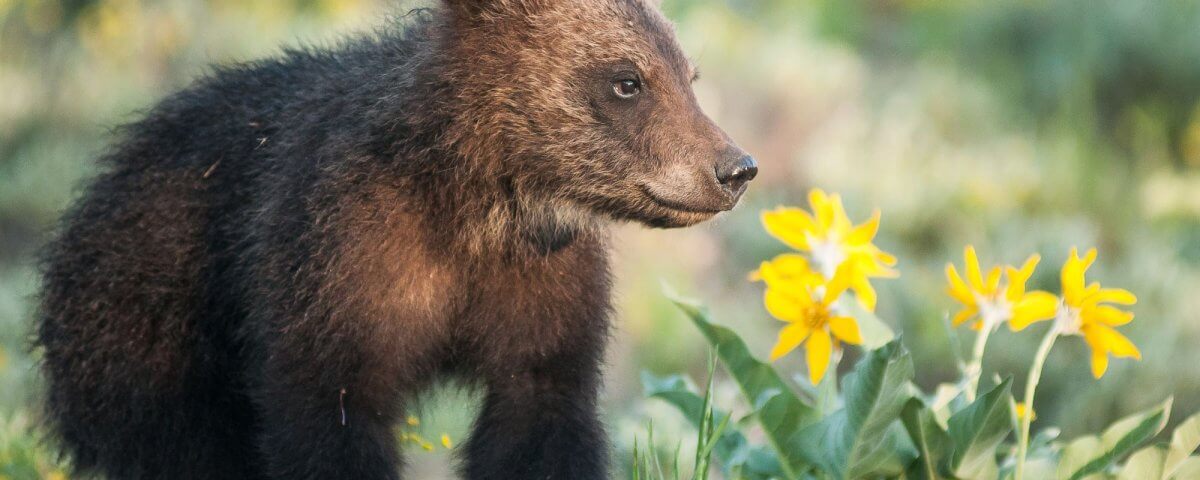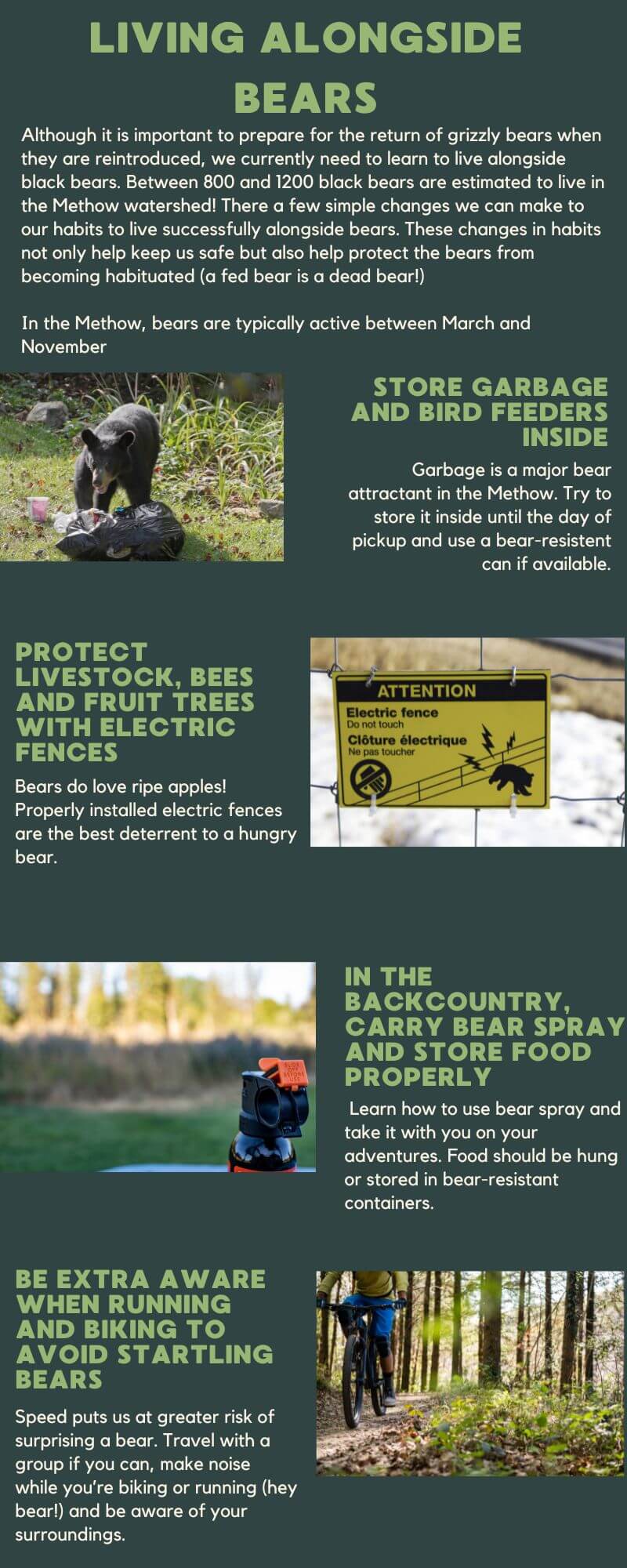Living Alongside Bears

Conservation Groups Welcome the Return of the Grizzly to the North Cascades
April 26, 2024
Comment on the Midnight Forest Restoration Project!
May 9, 2024Now that a decision has been made to bring grizzly bears back to the North Cascades, the hard work of restoring this endangered species begins! The grizzlies will be introduced slowly: 3-7 bears a year over 5-10 years until an initial population of 25 bears is achieved. The releases will be in remote habitats. Since the bears will have over 9500 square miles to roam in the North Cascades Ecosystem, it is unlikely that most of us in the Methow and Okanogan will ever see a grizzly. However, it is important to start thinking about human-bear coexistence, not only for possible encounters with grizzly bears but for more likely encounters with the over 800 black bears we have in the Methow Watershed.
Already, there is work going in to helping us live alongside bears in the Methow Valley. Home Range Wildlife Research in coordination with Defenders of Wildlife has conducted a Community Bear Assessment which explores local opportunities for becoming more bear-aware, current challenges in the Methow and where more effort is needed to foster human-bear coexistence. On April 28 from 5-6:30pm Home Range will be giving a talk at the Methow Valley Interpretive Center in Twisp to present the findings and recommendations of their Community Bear Assessment.
MVCC is a part of Methow Bear Coalition, a new group of local organizations (MVCC, Home Range Wildlife Research, WDFW and WasteWise Methow) working to educate our community and provide resources to successfully live alongside bears. We know it can be done—communities very similar to ours in Montana and British Columbia have made changes in their habits to live alongside both grizzlies and black bears. Below are some key things to remember when living in bear country.



